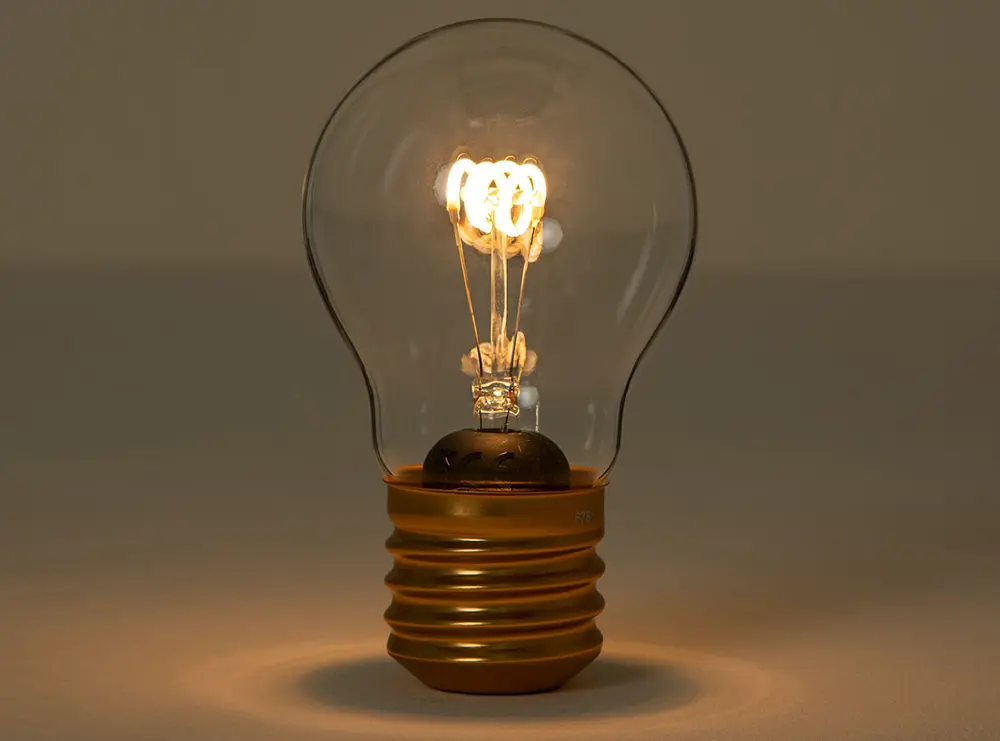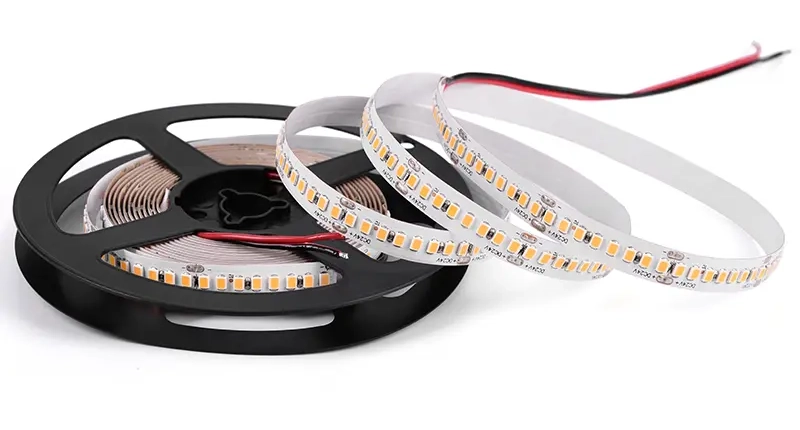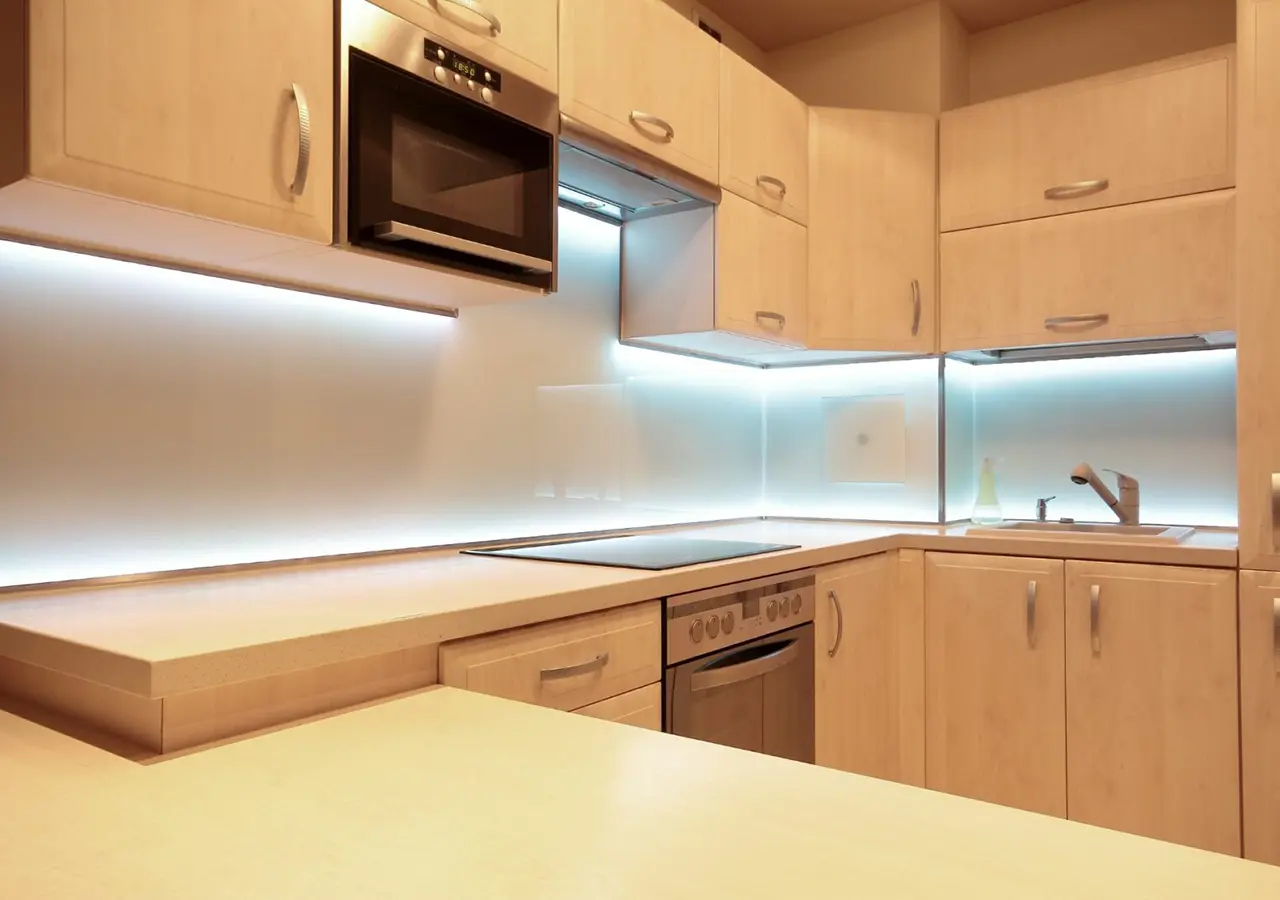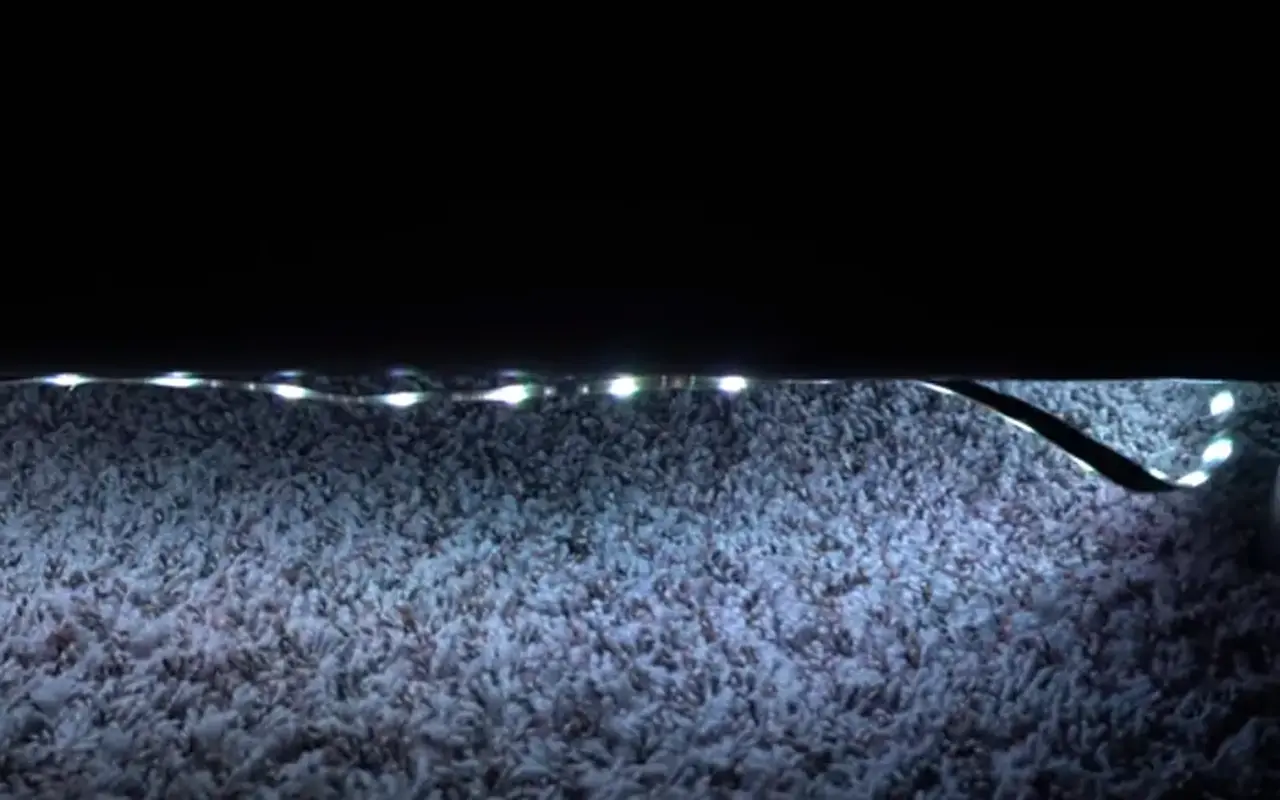Concerned about UV rays and radiation from LED lights? You’re not alone. People often wonder about the risks of LED technology. We will explore the facts and reveal the truth.
LED lights emit a little UV radiation, but it’s usually very small compared to other lights. Modern LEDs are designed to minimize UV emissions, making them safe for typical usage.
Stick with us as we explore the intricacies of LED lights and their connection to UV rays and radiation. We can provide all the information you need, from how the technology works to staying safe.
What are LED Lights and How Do They Work?
LEDs are modern marvels of lighting technology. They emit light and are highly advanced. But what makes them so special? LEDs use semiconductor materials instead of filaments to produce light. When electricity flows through a semiconductor, it raises the energy level of electrons. This makes them give off light. They call this process electroluminescence. LED technology is based on it. It provides efficient and versatile lighting solutions.
LED lights are becoming more and more popular worldwide. They make up 60% of the market share. In the United States alone, the sale of LED bulbs surpassed 450 million units in 2020. LEDs are the best lighting option for homes, businesses, streets, and art projects. They offer high efficiency and design flexibility. Experts expect the global LED market to reach USD 127.04 billion by 2027. People have great confidence in this technology.
LEDs are very bright, efficient, and safe from UV rays. They are revolutionary. How does this work? It starts with the phosphor inside the LED lamp. The LED’s semiconductor emits light in the blue and UV ranges. The lamp’s phosphor coating turns it into a wide range of light that we can see, while blocking UV radiation. The design of modern LEDs has changed lighting technology. It reduces UV risks and improves efficiency without compromise.
Health Canada and the World Health Organization both say that LEDs have low UV risks. As stated by Health Canada, “Exposure to UV radiation from LEDs does not pose a risk to human health when used as intended.” Dr. James Roberts, a renowned physicist, adds, “With well-engineered designs, LEDs are not only energy-efficient but also safer in terms of UV emissions. They’re the future of lighting.”
LED technology isn’t uniform. It’s rich with variations in wavelengths, designs, and specialized applications. Regular LEDs are made to reduce UV emissions. However, black lights, used in theater, emit UV rays in the 385–400 nm range. Horticultural LEDs are another example, tailored for agricultural purposes with different light spectra.
Museums around the world are using LED lights. They protect valuable artifacts from UV damage and color fading. The Van Gogh Museum in Amsterdam and the Smithsonian in Washington, D.C. use LEDs to display and protect art. Car makers are also using LED headlights because they are efficient and emit less UV light. This shows how LED technology is changing our world.
UV Rays and Radiation Briefed
UV Rays Explained:
UV rays, short for ultraviolet radiation, are more than just an invisible menace. Ultraviolet light is an important part of the electromagnetic spectrum. The violet part of visible light is located past it. Divided into three categories—UVA, UVB, and UVC—these rays have different effects on our health and environment.
1. UVA (320–400 nm): Accounting for about 95% of the UV radiation that reaches the Earth’s surface, UVA rays penetrate the skin more deeply than UVB rays. UV rays mainly age skin cells and can indirectly harm DNA. Regular exposure can lead to premature aging and an increased risk of skin cancer.
2. UVB (280–320 nm): These rays are responsible for direct DNA damage and are the primary cause of sunburn. They are important in causing skin cancer and other skin problems.
3. UVC (100–280 nm): The most dangerous form of UV radiation, UVC rays, are completely absorbed by the Earth’s atmosphere and do not reach the surface. Artificial sources, such as germicidal lamps, can generate UVC rays.
UV rays can cause health issues like cataracts and skin cancer. They also damage materials and fade colors in artworks. To understand why LED lights are better, it’s important to know about the UV spectrum.
Radiation Explained:
Radiation is a term that often evokes concern, but what is it exactly? Radiation is energy that travels through space or a material medium. We can classify it into two main categories.
1. Ionizing Radiation: This includes X-rays, gamma rays, and some ultraviolet rays. Ionizing radiation carries enough energy to detach electrons from atoms, creating ions. It can damage living tissue and DNA, leading to health problems.
2. Non-Ionizing Radiation: Comprising radio waves, microwaves, visible light, and certain UV rays, non-ionizing radiation doesn’t have enough energy to ionize atoms. It’s generally considered harmless at regular exposure levels.
We encounter radiation every day from sunlight and household appliances. Distinguishing between harmful and benign forms of radiation is crucial for our well-being.
Do LED Lights Emit UV Rays and Radiation?
Do LEDs Emit UV Rays?
Do LED lights emit UV rays? Yes, but there’s more to the story. Standard LEDs can produce a minuscule amount of UV radiation. LED lamps have phosphors that turn UV radiation into visible white light. This change reduces the UV emissions a lot, making them very small and safe.
Why is this important? For individuals with specific UV-sensitive conditions or applications where UV exposure must be minimized (such as art galleries or manufacturing environments), LEDs offer a reassuring solution. Their new lighting technology significantly reduces UV emissions to almost zero levels.
Do LEDs Emit Radiation?
LEDs, like other electrical devices, emit electromagnetic radiation, which is a broad term. But is this cause for concern? LEDs are often talked about for UV radiation, but it’s already known to be minimal.
The electromagnetic radiation that LEDs emit falls under the non-ionizing category. This means it can’t harm living tissues or change the structure of materials. This radiation is not risky because it is low in frequency and intensity.
The concerns around LED radiation are often more about misunderstandings and misconceptions than fact-based risks. LEDs are safe and efficient lights when designed properly and meet safety standards. They dispel fears and provide accurate information.
Health and Safety Concerns: UV Rays and Radiation from LED Lights
Health Problems Associated with UV Lighting:
Extreme exposure to UV radiation is more than just a discomforting sunburn on a sunny day. It’s a pervasive issue that can lead to severe health problems. Let’s explore the multifaceted health concerns related to UV lighting:
Sunburn and Skin Damage: UVB rays can cause immediate harm by triggering sunburn and long-term effects like premature aging, wrinkles, and skin discoloration.
Eye Problems: Prolonged exposure to UV radiation can lead to cataracts, macular degeneration, and other eye disorders. Protection from UV rays is essential not only for the skin but also for eye health.
Skin Cancer: Both UVA and UVB rays contribute to the development of various skin cancers, including melanoma, basal cell carcinoma, and squamous cell carcinoma.
Weakening of the Immune System: Perhaps surprisingly, UV radiation can also suppress the immune system. It can decrease the skin’s immune response, making the body more susceptible to infections and diseases.
Other Conditions: UV rays can exacerbate existing skin conditions, such as lupus, and may also lead to photokeratitis, a painful inflammation of the eye.
Given these concerns, the type of lighting used in homes, offices, and commercial spaces should be chosen with care.
Чи загрожує ультрафіолетове випромінювання світлодіодів здоров'ю?
Чи становить світлодіодне випромінювання ризик для здоров'я, враховуючи шкідливий вплив ультрафіолетового випромінювання? Як правило, ні. І ось чому:
Низький рівень викидів: Ультрафіолетове випромінювання, яке випромінюють світлодіодні лампи, є значно нижчим порівняно з іншими джерелами, такими як компактні люмінесцентні лампи (КЛЛ). Люмінофори в світлодіодних лампах перетворюють ультрафіолетове випромінювання в безпечне видиме світло.
Правила техніки безпеки: Світлодіодна продукція, як правило, відповідає суворим правилам безпеки, гарантуючи, що будь-яке ультрафіолетове випромінювання значно нижче небезпечних рівнів.
Чутливі особи: Хоча загалом світлодіоди безпечні для більшості користувачів, людям з особливими захворюваннями або підвищеною чутливістю до ультрафіолетового випромінювання все ж може знадобитися вжити додаткових заходів обережності. Консультація з медичним працівником або використання спеціалізованих світлодіодних продуктів може пом'якшити ці занепокоєння.
Порівняння джерел світла: УФ-випромінювання в світлодіодах, галогенах та інших джерелах
УФ-випромінювання та галоген:
Галогенні лампи колись були популярними, бо випромінюють яскраве світло, але у них є прихована проблема. Вони випромінюють більше ультрафіолетового випромінювання, ніж світлодіоди. Це випромінювання може завдати шкоди чутливим поверхням, таким як картини, тканини і навіть шкіра. Давайте заглибимося в це порівняння:
УФ-випромінювання в галогенних лампах: На відміну від світлодіодів, галогенні лампи не мають механізму перетворення ультрафіолетових променів у видиме світло. Це призводить до вищого рівня ультрафіолетового випромінювання, що потенційно може завдати шкоди чутливим матеріалам.
Використання в чутливих середовищах: У таких місцях, як музеї, художні галереї або будинки з цінними артефактами, використання галогенних ламп може призвести до поступової деградації кольорів і цілісності матеріалів.
Міркування щодо здоров'я: Тривалий вплив галогенного освітлення може становити ризик для здоров'я шкіри та очей, особливо для людей, які працюють в умовах інтенсивного галогенного освітлення.
Типи ламп, що випромінюють ультрафіолетові промені:
Освітлення змінилося з плином часу, і сьогодні є багато варіантів на вибір. Різні лампочки, такі як галогенні, КЛЛ, лампи розжарювання та світлодіоди, випромінюють різну кількість ультрафіолетового світла.
Галогени: Як згадувалося вище, галогени випромінюють більше УФ-випромінювання, що робить їх менш бажаним варіантом для чутливих до ультрафіолету застосувань.
КЛЛ: Компактні люмінесцентні лампи також випромінюють УФ-промені, але зазвичай менше, ніж галогенні. У певних ситуаціях вони можуть викликати занепокоєння.
Лампи розжарювання: Ці традиційні лампи випромінюють мінімум ультрафіолетових променів, але є неефективними з точки зору споживання енергії.
Світлодіоди: Світлодіоди є одним з найбезпечніших варіантів, оскільки випромінюють незначну кількість ультрафіолетових променів. Для тих, хто турбується про ультрафіолетове випромінювання, енергоефективність та навколишнє середовище, вони є ідеальним вибором.
Світ освітлення є широким і різноманітним. Розуміючи різні джерела світла, особливо УФ-випромінювання, споживачі можуть зробити усвідомлений вибір. Світлодіоди популярні, оскільки вони безпечні, ефективні та інноваційні.
Вибираємо правильні світлодіодні світильники: Посібник для покупця
Посібник з відбору:
Світлодіодні лампи можуть збити з пантелику, адже існує так багато варіантів. Однак шлях до вибору правильних світлодіодних ламп не повинен бути складним. Ось вичерпний посібник, який полегшить вам прийняття рішення:
1. Ефективність: Розглянемо співвідношення люменів до ват, щоб оцінити світловіддачу та енергоспоживання. Вища ефективність означає більшу яскравість при меншому енергоспоживанні.
2. Довголіття: Світлодіодні лампи відомі своїм довгим терміном служби. Перед покупкою обов'язково перевірте наявність гарантії та очікуваний термін її дії.
3. Економічна ефективність: Хоча початкові витрати можуть бути вищими, довгострокова економія на рахунках за електроенергію робить світлодіоди економічно обґрунтованим вибором. Порівняйте різні бренди та моделі, щоб знайти економічно вигідний варіант.
4. Ультрафіолетове випромінювання: Оскільки ми зосереджені на УФ-випромінюванні, переконайтеся, що вибираєте світлодіоди з низьким рівнем УФ-випромінювання. Сертифікація та відповідність стандартам безпеки можуть бути сильними показниками якості в цьому відношенні.
5. Колір і яскравість: Світлодіоди бувають різних колірних температур і рівнів яскравості. Виберіть найкращу комбінацію для простору, яка відповідає атмосфері та потребам.
6. Репутація виробника: Обирайте відомих виробників, які дотримуються стандартів якості та безпеки. Читайте відгуки клієнтів і звертайтеся за професійною порадою, щоб зробити правильний вибір.
7. Особливості: Деякі світлодіоди мають функції регулювання яскравості, дистанційного керування та сумісності з системами "розумного дому". Зверніть увагу на ці функції, якщо вони відповідають вашим потребам.
Переваги світлодіодного освітлення
Переваги та особливості:
Світлодіодне освітлення - це не просто тренд, це революція в освітленні. Світлодіодне освітлення має багато переваг, які приваблюють як споживачів, так і бізнес.
1. Енергоефективність: Світлодіоди споживають значно менше енергії порівняно з традиційними освітлювальними рішеннями, що означає значну економію на рахунках за електроенергію.
2. Довге життя: Оскільки термін служби часто перевищує 25 000 годин, потреба в частій заміні зведена до мінімуму, що знижує витрати на обслуговування.
3. Низьке тепловиділення: Unlike halogen or incandescent bulbs, LEDs produce minimal heat, making them safer and more comfortable in various settings.
4. Easy Control and Maintenance: Advanced LED systems enable seamless control over brightness, color, and even synchronization with music or other devices. Maintenance is generally straightforward and hassle-free.
5. Environmental Friendliness: LEDs are free of toxic materials like mercury and are highly recyclable, contributing to a reduction in carbon footprint.
6. Design Flexibility: Their compact design allows for creativity in lighting schemes, whether it’s accent lighting in a home or an intricate display in a commercial space.
7. Minimal UV Emissions: As we’ve covered, the low UV emissions in LEDs make them a safe option, protecting both health and sensitive materials.
Myths and Facts: Unveiling the Truth about LED Lights and UV Emissions
In the ever-evolving field of LED technology, misconceptions can arise. Here we’ll debunk some common myths:
1. Myth: LEDs Emit Dangerous Levels of UV Rays. Fact: Standard LEDs emit negligible amounts of UV rays, often converted into visible light by phosphors within the lamp.
2. Myth: LEDs Are Expensive and Not Worth the Investment. Fact: While upfront costs might be higher, the long-term savings and benefits far outweigh the initial investment.
3. Myth: LEDs Provide Harsh and Unnatural Light. Fact: Modern LEDs are available in a wide range of color temperatures, allowing for natural and pleasant lighting experiences.
4. Myth: LEDs Are Difficult to Install and Maintain. Fact: Many LEDs are designed for easy installation and require minimal maintenance, making them user-friendly.
The Future of LED Technology: What to Expect
As we peer into the horizon, the future of LED technology seems to glow with promise. Here’s what we might expect:
1. Enhanced Efficiency: Research and development are likely to push the boundaries of energy efficiency, making LEDs even more appealing to energy-conscious consumers.
2. UV and Radiation Safety: Continued emphasis on UV and radiation safety will lead to more refined designs, reducing UV emissions even further.
3. Integration with Smart Technology: The marriage of LEDs with smart home systems and IoT will offer unparalleled control and customization in lighting solutions.
4. Sustainability Focus: Expect to see innovations aimed at making LEDs more sustainable, both in terms of materials used and recycling processes.
5. Creative Design Possibilities: Designers and manufacturers will continue to explore the versatility of LEDs, creating unique and artistic lighting solutions.
6. Affordability: As technology progresses, the cost of high-quality LEDs is expected to decrease, making them accessible to a broader audience.
Поширені запитання
Why are LED lights considered a safe choice regarding UV emissions?
LEDs emit negligible amounts of UV rays, making them a safe option for most users. LED lamps use phosphors to convert UV rays into white light, reducing harmful exposure. Reputable brands adhere to strict safety standards, further ensuring their reliability.
What makes LEDs more energy-efficient compared to traditional lighting options?
LEDs have a higher lumens-to-watts ratio, delivering more brightness for less power. These lights save energy. They can convert electricity into light energy with advanced design.
I’ve heard that LED lights last a long time. Is that true?
Absolutely! LEDs are known for their impressive lifespan, often exceeding 25,000 hours. They require fewer replacements, saving both time and money in the long run.
Can LED lights be used creatively for various design purposes?
LEDs are great because they are small and have many uses. They can be designed in many ways. The creative possibilities are almost endless, from home lighting to commercial displays.
Are LED lights harmful to paintings and other sensitive materials?
LED lights are favored by museums because they emit less UV radiation, safeguarding paintings. They’re a trusted choice for preserving the integrity of precious artifacts.
How do I choose the right LED lights for my home or office?
When choosing, look at efficiency, longevity, UV emissions, color, brightness, reputation, and features. Find LED lights that fit your space and requirements by aligning them with your needs.
Do LEDs contribute to environmental sustainability?
Indeed, LEDs are free of toxic materials like mercury and are highly recyclable. LED lights use less energy and have a longer lifespan, which helps the environment.
Are LED lights more expensive than traditional bulbs? What’s the cost-benefit?
LEDs may cost more at first, but they save energy and require less maintenance. Their long life and efficiency translate to a wise investment over time.
What innovations can we expect in LED technology in the future?
Майбутнє світить яскраво зі світлодіодами! Очікуйте на покращення енергоефективності, захисту від ультрафіолетового випромінювання, інтеграцію з інтелектуальними технологіями, сталий розвиток, можливості креативного дизайну та підвищення цінової доступності.
Мене турбує ультрафіолетове випромінювання від ламп. Як світлодіоди порівнюються з галогенними лампами та КФЛ за рівнем УФ-випромінювання?
Світлодіоди є більш безпечним вибором для УФ-випромінювання. Вони випромінюють менше УФ-випромінювання, ніж галогени або КФЛ. Конструкція та функції безпеки цих продуктів знижують ризики УФ-випромінювання, тому їх часто обирають для чутливих до УФ-променів застосувань.
Висновок
Світлодіодні лампи повністю змінили те, як ми бачимо і розуміємо освітлення. Вони справили глибокий вплив, як в прямому, так і в символічному сенсі. Випромінювання ультрафіолету дуже низьке. Інновації продовжують покращувати їхню безпеку та ефективність. Вибір на користь світлодіодів - це не лише енергоефективне рішення, але й вибір на користь здоров'я.
Юнітоп це китайський виробник, який виготовляє світлодіодні ліхтарі. Їхні інноваційні стрічкові світильники і неоновий флекс принесли їм визнання. Ми прагнемо запропонувати вам першокласні світлові рішення з використанням передових технологій. Маєте додаткові запитання чи унікальні вимоги? Зв'яжіться з нами негайно. Довіртеся досвіду Unitop і дозвольте нам освітити ваш світ.

Зараз Том є менеджером з продажу в Unitop (China) Co., Limited. Він був у Світлодіодне освітлення з 2005 року. Він є експертом у сфері продажів та маркетингу, а також в управлінні заводом. Захоплюється бодібілдингом, а ще він шалений фанат Apple! Він працьовитий хлопець, любить вчитися і пробувати щось нове.
Електронна пошта: tom@unitopledstrip.com Ватсап: +86-18680307140







Залишити відгук
Хочете приєднатися до дискусії?Не соромтеся робити свій внесок!